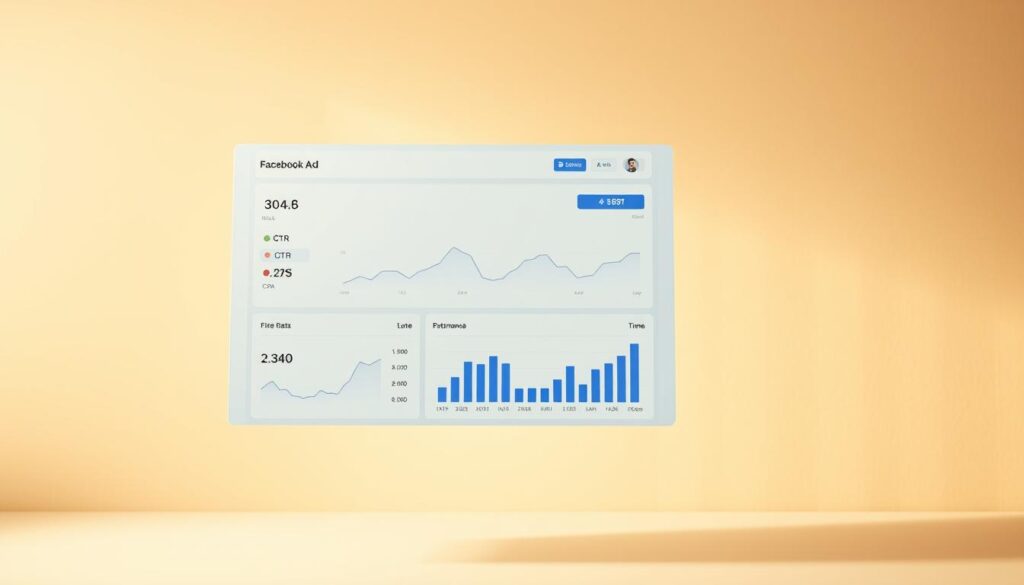Nearly 68% of small businesses with under $1M annual revenue run Facebook ad campaigns with daily budgets of $50 or less. This statistic raises a key question for entrepreneurs: Is $20 a day enough for Facebook ads to drive measurable results?
Facebook advertising costs have risen 23% year-over-year. Yet, 45% of local service providers report maintaining or growing leads with budgets under $30 daily. This article explores if a $20 facebook ads budget can compete in today’s competitive ad landscape. It also debunks myths about required spending thresholds and reveals strategies to optimize every dollar.
Key Takeaways
- Over 70% of SMBs operate within $50 daily ad budgets, proving low-cost strategies work.
- Targeted audience selection reduces wasted spend, making $20/day budgets impactful.
- Facebook’s ad algorithms prioritize ad relevance, not just budget size, for visibility.
- Small budgets require hyper-focused campaign objectives like traffic or lead generation.
- Data shows 35% of $20/day advertisers achieve ROI through A/B testing and creative optimization.
Understanding the Reality of Small Facebook Ad Budgets
Small businesses often ask what a facebook ads daily budget of $20 can do. This section helps by looking at what you can expect and comparing it to others.
What $20 a Day Actually Gets You on Facebook
With $20 a day, you can see these basic results:
| Metric | Performance Range |
|---|---|
| Monthly Reach | 15,000-45,000 users |
| Cost Per Click (CPC) | $0.10–$0.50 |
| Average Monthly Conversions | 15–40 |
Comparing $20 Daily Budget to Industry Averages
Looking at industry data, small budgets stand out. Here’s how $20/day compares to what others spend:
| Industry | Median Monthly facebook advertising cost |
|---|---|
| Retail | $3,000–$8,000 |
| Local Services | $500–$2,000 |
| Consulting | $1,000–$4,000 |
Setting Realistic Expectations for Limited Spending
- Focus on hyper-targeted audience segments to reduce wasted spend
- Track facebook ads daily budget efficiency via Facebook Ads Manager
- Prioritize high-intent keywords and lookalike audiences for better ROI
Even with just $20 a day, you can get results with smart targeting and testing. Success comes from matching your ads to what your audience wants, not just from your budget.
Is $20 a Day Enough for Facebook Ads?
Deciding on a Facebook marketing budget depends on your business goals and the market. Spending $20 a day can work for some niches but might not be enough in competitive markets. It’s important to match your budget with your goals and who you want to reach.
“Budget effectiveness isn’t about size alone—it’s about precision.” – Facebook Ads Best Practices Guide
- When $20 works: Local service providers, niche product retailers, and brand awareness campaigns in low-competition markets often succeed with this budget. Targeting hyperlocal audiences or specialized demographics reduces ad spend waste.
- When it may fail: E-commerce brands in crowded industries, national campaigns, or lead-generation goals in high-cost sectors like finance or healthcare typically require larger budgets to achieve measurable outcomes.
Geographic scope is key. A landscaping service targeting one city might see results, while a nationwide tech gadget launch likely needs more funding. Keep an eye on metrics like cost-per-click and audience engagement to see if your budget is enough.
Consider three things: the size of your target audience, how competitive your industry is, and what you want to achieve. Use Facebook’s targeting tools to narrow your audience, which can help save money. With small budgets, it’s all about being precise with who you target to get the best return on investment.
Setting Up Your Facebook Advertising Strategy on a Tight Budget
Creating a solid facebook advertising strategy with a small facebook ads budget needs careful planning. Start by matching goals with clear actions. This way, every dollar spent will have a direct impact.
Define Objectives Clearly: First, set specific targets like boosting website traffic or getting local leads. For instance, a bakery might aim for “100 monthly email signups” instead of just wanting more people to know about it.
- Campaign Type Selection: Pick campaign types that are cost-effective. With a tight facebook ads budget, focus on “Conversions” or “Lead Generation” campaigns. These are better than trying to reach everyone.
- Account Structure Optimization: Use separate campaigns for different goals. Organize ad sets by audience, like location or interests. This helps avoid wasting money on the wrong people.
Target your ads to specific groups based on where they live or what they like. Try two different ad versions in each ad set to find the best ones. Stop ads that aren’t working well and put more money into the ones that do.
Targeting Techniques to Maximize Your $20 Daily Budget
Effective targeting can make the most of facebook ads spending. Small businesses need to get specific with their facebook advertising strategy. This way, every dollar goes to the right people.
- Combine demographics (age, location) with specific interests. Example: “Hikers in Colorado interested in camping gear.”
- Upload customer email lists to create Custom Audiences for re-engagement campaigns.
- Build Lookalike Audiences at 1-2% to prioritize high-potential prospects sharing traits of top customers.
- Use 5-15 mile geographic radius targeting to drive local foot traffic for brick-and-mortar stores.
| Technique | Impact |
|---|---|
| Layered Interests | Reduces ad waste by focusing on niche behaviors |
| Lookalike Audiences | Expands reach while maintaining quality |
| Geotargeting | Optimizes local business visibility |
Facebook’s algorithm needs 500-1,000 impressions to start optimizing ads. For small budgets, start with 3-5 specific audience groups. Test two ad variations each week to find the best ones. Stop ads that don’t get clicks after 3 days.
Use A/B tested ad copy with these techniques. Focus on audiences where even 1% conversion rates are worth it. Look for people with clear intent, like those who’ve visited your website or product pages.
Creating High-Converting Ad Creative Without Breaking the Bank
For small businesses, making ads that work well is key. You don’t need a lot of money to do it. Simple designs and clear messages can make a big difference. This way, you can get the most out of what you spend.
Design Elements That Drive Engagement on Limited Budgets
- Authentic visuals: Use real photos or clips of your customers to build trust. Sites like Canva have free templates that help you meet your goals.
- User-generated content: Use what your customers have shared to show off real experiences. This saves money and feels genuine.
- Color psychology: Choose colors that match your message (like red for urgency or blue for trust). This helps without needing expensive design tools.
Copywriting Formulas That Convert for Small Spenders
Good copy is clear and urgent. Use these formulas:
- Problem-Agitate-Solution (PAS): “Struggling with [issue]? Our solution stops [pain point] and delivers [benefit].”
- Before-After-Bridge (BAB): “Before: [pain]. After: [result]. Here’s how we bridge the gap.”
Testing Visuals When Every Dollar Counts
Test wisely to save money:
- Try different headlines first to see what works.
- Use small amounts of money to test visuals, like $5 a day.
- Look at CTR and conversion rates to find the best option.
Facebook’s Ads Manager lets you test in phases. This way, every dollar you spend helps plan your next campaign.
Metrics That Matter When Running Facebook Ads on $20 a Day

When you spend $20 a day on Facebook ads, it’s key to track the right metrics. Focus on facebook ads roi and facebook advertising cost efficiency. Don’t just look at reach; aim for metrics that show real results.
- Efficiency Metrics: CPM (Cost Per Mille), CPC (Cost Per Click), and CTR (Click-Through Rate) show how well your budget works.
- Engagement Metrics: Engagement Rate and Video Completion Rate tell you if your content is hitting the mark.
- Conversion Metrics: Conversion Rate and Cost Per Acquisition (CPA) show real business results. ROAS (Return on Ad Spend) connects to your facebook ads roi.
| Metric | Industry Benchmark (20$ Budget) |
|---|---|
| CPM | $4–$7 (Retail), $6–$9 (Services) |
| CPC | $.15–$.30 (E-commerce), $.20–$.45 (Local Services) |
| ROAS Target | 3:1 minimum for sustained campaigns |
“With small budgets, focus shifts from volume to precision. Prioritize metrics showing tangible value over vanity stats.” – Sarah Lin, Digital Marketing Analyst
For small budgets, aim for precision over volume. Run ads for 7–14 days before checking results. This helps avoid making quick, wrong decisions. Keep an eye on facebook advertising cost per conversion to find your best audience. Adjust your bids based on ROAS, not just total spend.
Case Studies: Successful Facebook Marketing Campaigns on Minimal Spending
Real-world examples show that even small budgets can lead to big results on Facebook. These stories highlight how businesses made the most of their Facebook ad spending. They achieved growth despite having tight budgets.
Local Business Success Stories with $20 Daily Budgets
Small businesses in retail and services saw major wins with smart targeting:
- A pizzeria in Austin boosted weekend visits by 40% by targeting people within 3 miles. They promoted lunch specials and limited-time offers.
- A hardware store in Chicago saw a 25% increase in sales events. They targeted homeowners looking for DIY projects with Facebook ads.
- A plumbing service in Miami got 50 new leads each month. They used lead ads to highlight emergency repairs, rotating ad sets weekly with a $20 daily budget.
E-commerce Wins on Limited Facebook Advertising Cost
Niche e-commerce brands made the most of their limited budgets with creative strategies:
- A candle company focused on eco-friendly products. They retargeted abandoned carts and used carousel ads for product close-ups. Their Facebook ads spending was highest on weekends when sales were best.
- A health supplement brand tested 5 ad creatives each week. This cut their cost-per-click by 18% while keeping a $20 daily budget.
Service Business Strategies That Worked on Tight Budgets
Service industries used these effective methods within $20 daily budgets:
| Strategy | Implementation | Outcome |
|---|---|---|
| Lead Magnets | Free guides like “10 Home Cleaning Hacks” in ad CTAs | 25% increase in service bookings |
| Audience Segmentation | Targeted homeowners in specific zip codes with children | 30% higher click-through rates on family safety service ads |
| Landing Page Optimization | Mobile-first design with clear CTAs | 40% lower cost per lead |
Common Pitfalls to Avoid When Managing a Small Facebook Ads Budget
Small businesses often make mistakes that waste their limited ad budgets. Facebook ads daily budget limits mean you must be very careful. This is to avoid spending money on things that don’t work.
- Overly Broad or Narrow Targeting: Targeting too many people can spread your budget too thin. On the other hand, targeting too few people limits your reach.
- Uneven Budget Allocation: If you spread your facebook ads daily budget too thin, no single campaign can get enough attention.
- Generic Ad Content: Ads that don’t speak to specific audiences can lower your ad scores. This means you’ll spend more money.
- Premature Campaign Adjustments: Changing your campaigns too soon can lead to bad decisions. Wait until you have enough data.

“A $20 daily budget requires surgical precision—every dollar spent without intent is a dollar lost.” – Digital Marketing Institute Report (2023)
To avoid these mistakes, you need a solid facebook advertising strategy. Check for audience overlap between campaigns and focus on the best-performing ads. Test your ad messaging in stages, not every week.
Don’t make changes too quickly. Wait at least 72 hours for the algorithm to learn from your spending. This way, you can make better decisions based on solid data.
Scaling Strategies: When and How to Increase Your Facebook Ads Spending
When your facebook marketing budget starts showing good results, it’s time to think about growing. But, you need to plan carefully to avoid spending too much. Look for signs that your ads are ready to grow.
- ROAS consistently exceeds 4:1 over two weeks
- Cost-per-acquisition drops below industry benchmarks
- Ad frequency stays below 3 impressions per user
- Website traffic shows 20%+ month-over-month growth
| ROAS Threshold | Budget Increase | Timing |
|---|---|---|
| 3:1 – 4:1 | 25% over 2 weeks | After 14-day stable performance |
| 4:1+ | 50% over 4 weeks | With A/B-tested creatives |
Incremental Growth Tactics
Start by increasing facebook ads spending by 10-20% every 7-10 days. Use Facebook Ads Manager to keep an eye on how your ads are doing. Stop ads that aren’t working well and put more money into the best ones.
Preserving ROI During Scaling
“Scaling without strategy is like driving blindfolded. Data is your rearview mirror.”
Here are some tips to keep your ROI safe while you scale:
- Change your ad creatives every 7-10 days after you increase your budget
- Expand your target audience by +10% every week
- Use automated rules in Ads Manager to adjust your bids
Small businesses should only scale after they have a stable weekly ROAS of 3:1 or more. Growing slowly helps you grow without using up all your resources at once.
Alternative Approaches: Complementing Your $20 Facebook Ads with Other Marketing Tactics
Small businesses can improve their Facebook ads ROI by using other marketing tactics. Combining paid ads with email marketing, SEO, and organic content boosts reach and impact. This mix can make your marketing efforts more effective.
- Email marketing: Build lists with lead magnets and retarget website visitors. Send personalized offers to nurture leads outside Facebook.
- SEO: Optimize website content for search engines. Organic traffic reduces reliance on paid ads while reinforcing brand authority.
- Content marketing: Publish blogs or videos addressing customer pain points. Share snippets on Facebook to drive organic engagement.
- Organic social: Post high-quality updates on Facebook without ads. Engage followers to grow an audience organically.
| Channel | Benefit | Integration Tip |
|---|---|---|
| Retarget website visitors | Use ad clicks to populate email lists | |
| SEO | Passive traffic growth | Create blog posts linked in ad landing pages |
| Content | Brand awareness | Repurpose ad creatives into blog posts |
Tracking Facebook ads ROI needs cross-channel analysis. Use tools like UTM parameters to measure how organic efforts influence paid campaign performance. For example, SEO traffic might lower cost per lead for Facebook ads by reducing competition for the same audience.
Small budgets demand strategic coordination. Align messaging across all channels to ensure consistency. A $20 daily ad budget paired with email automation and SEO can create a system where each tactic strengthens the others. Prioritize tactics with long-term value to avoid overextending resources.
Conclusion: Making Every Dollar Count in Your Facebook Advertising Journey
Is $20 a day enough for Facebook ads? It depends on how well you do it. With small budgets, you need to focus on what really works. This means targeting the right people, using great visuals, and making it easy for them to take action.
By following the tips in this guide, even a small budget can lead to big results. It’s all about setting clear goals and working towards them.
Keeping an eye on your data is key. Look at things like how much each click costs and how many people convert. This helps you make your ads better over time.
Local businesses show that even with a small budget, you can find what works best. They test different images and words to find the best ads.
Facebook’s changes mean you always need to stay up to date. Even with a $20 daily budget, you should watch Meta’s Business Help Center for new rules. New tools like Meta’s automated bidding can help you reach more people without spending more.
Success comes from being careful and focused. Small-budget ads do well when they’re clear, relevant, and always getting better. While more money can help, focusing on these key areas is more important. Facebook ads ROI is about using data to make your ads better, not just spending more.

